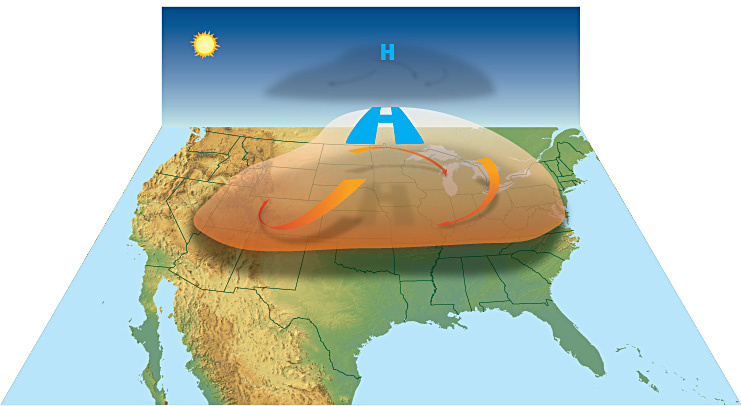It’s so hot, even the corn is sweating!
Late July’s heat dome—a high pressure system trapping heat and moisture over most of the continental United States—drove high temperatures over 100 degrees Fahrenheit (38 Celsius) in many places, sometimes for days. Can this much heat be good for corn? It turns out that the answer is “no.” I know this because last week I completed a study of the effects of temperature on U.S. corn. My goal was not only to be able to estimate the effects of climate change on corn yields in the future, but also to understand the best way to apply temperature data to the analysis. One of the things I did was to follow the lead of other researchers and convert daily maximum and minimum temperatures to essentially hourly temperatures to be able to see the effect of an hour at each 1-degree interval on yields.
I discovered a number of interesting things over the course of my analysis, but one of the most relevant here is that corn is especially sensitive to heat in its third month of growth, somewhat in the fourth month, less in the second, and very little in its first and fifth. Since most of the United States plants corn in May, we are in the third month for most corn being grown in the U.S.
Between July 20 and July 24, depending upon where a farm is located, a heat dome made most people—and their corn plants—genuinely uncomfortable. An interesting question to answer is how much damage might the heat dome have done to the U.S. corn harvest? Given that the main crop of U.S. farmers is corn, and that the United States is the leading global producer of corn, this could have important implications for not only farm income, but also food security around the world, as well as for production of livestock feed and biofuels.
Des Moines, Iowa, is the classic corn-growing area. Its temperatures appear ideal for growth, with the mean daily maximum temperature for July being 86 degrees (30 C). Taking both forecast highs and lows for Des Moines for July 21 to 24, along with actual measurements for July 19 and 20, I generated “hourly” temperatures for July 20 to 23—when the heat dome was projected to be actively nestled over Des Moines. During that four-day period, the average daily maximum temperature was estimated to be 95.25 degrees (35.1 C), slightly more than 9 degrees (5 C) warmer than normal.
I used the results of my study of the effect of temperature on heat, and I compared the results of corn under the heat dome for those 4 days against corn under normal July temperatures for those days. What I found was that the losses just as a result of those 4 days would be 3.9 percent of yield. That means that even if the rest of the year is normal, and also assuming that up until now has been normal, those 4 days of heat will have a high cost for Des Moines farmers. Assuming something close to $4 per bushel ($160 per ton) for corn, and that normal yields are around 180 bushels per acre (11.25 tons per hectare), this amounts to a loss of 7 bushels per acre (0.44 tons per hectare), which is a loss of $28 per acre ($70 per hectare).
The heat dome was quite large, and covered most of the corn growing area of the United States. If it had a similar effect on all corn areas in the United States, the heat dome will cost U.S. farmers roughly $2 billion dollars.
Just to check my work: David Lobell and his colleagues wrote in a famous article analyzing the effect of heat on African corn that the rule of thumb “each degree day spent above 30 degrees C reduced the final yield by 1% under optimal rainfed conditions.” Applying this rule to the data for Des Moines, we find that yield losses should be 6.0 percent (larger than the estimates from my own analysis). In which case, projected to all of the United States, we would expect that $3 billion in damages would accrue to U.S. farmers as a result of the heat dome.
Please keep in mind that this ignores damages done to other crops. Soybeans, for example, is the second leading crop in the United States, and researchers have pointed to a similar heat sensitivity for soybeans.
Now imagine if climate change comes along and raises the temperatures in 2050 by 9 degrees (5 C), and this not just for four days, but for all of July (as well as all the other months). One might expect a huge reduction in what we would consider normal yields today—maybe losses on the order of 30 percent or more. If American farmers want to continue leading the world in corn production and productivity, it might be time to take climate change very seriously.
In a future article, I will share the results of my analysis when I used some of the world’s best climate models to see what impact climate will likely have on yields in 2050.
Timothy Thomas is a senior research fellow in IFPRI’s Environment and Production Technology Division.







